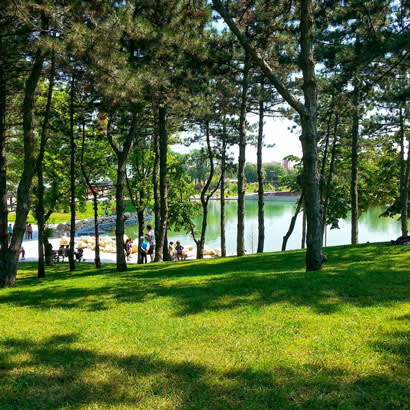Things You Should Know
The Land and Water Conservation Fund (LWCF) has evolved into an innovative toolbox, supporting everything from local sports fields to national parks to working forests to wildlife refuges. These tools include nine programs, including the State and Local Assistance Program, which is administered by the National Park Service (NPS).
- All 50 states, Washington, D.C., and U.S. territories have different processes for allocating funding.
-
- Individual state apportionment is determined by a national formula outlined in the Land and Water Conservation Fund Act.
- States must update regularly their Statewide Comprehensive Outdoor Recreation Plan (SCORP) to be eligible for LWCF matching grant funding from NPS. SCORPs typically:
- Identify demand for and supply of recreational resources within the state.
- Outline new opportunities and the need for recreational improvements.
- Create an implementation plan to meet targets based on input from elected officials and the public.
- Identify the state agency that will represent the state in working with NPS.
- LWCF requires a one-to-one match of federal funds. This match can be a “cash” match or a match through volunteer services and hours.
- The application cycle process for Traditional/Formula State Grant is different for each state:
- Appropriation laws have traditionally not provided states with directions on how they can internally award and spend their regular appropriations. Decisions on funding are done in accordance with state SCORP plans.
- To learn more about the specific grant application cycles in each state, click the button below:
LWCF in My State
- There are two categories of LWCF matching grants: Traditional/Formula State Grants and Competitive State Grants.
- A state can apply for competitive grant funding in addition to traditional grant funding in the same cycle.
- Traditional/Formula State Grant funding is divided among the states from the total appropriations by NPS.
- States award their appropriations to fund proposed recreational projects through a statewide competition.
- Selected project applications are forwarded to NPS for final approval to receive federal grant dollars.
- The project selection process is typically determined by how well the proposed project meets each state’s specific plans, priorities and criteria outlined in the SCORP.
- State appropriations can be used to fund state projects or passthrough projects, which include localities and tribes.
- Competitive State Grant funding is divided among the states by NPS through a separate national competition: The Outdoor Recreation Legacy Partnership Program.
- A state may apply to receive competitive grant funding and nominate up to four projects for NPS to consider.
- The project selection process is determined by the specific objectives in the competitive grant announcement and the requirements outlined in the state’s SCORP.
- The goals set in the January 2020 grant announcement were to fund projects in historically marginalized and underserved urban areas (50,000+ people) and neighborhoods that lack sufficient outdoor recreation opportunities.
Frequently Asked Questions
Q: Who is and is not eligible to apply for an LWCF matching grant?
A: Eligible entities include:
- Cities
- Towns
- Counties
- Native American Tribes
- Regional Park Authorities
- State Agencies
Ineligible candidates include:
- Private Individuals
- Nonprofit Organizations
- Charitable Organizations
However, nonprofit, charitable organizations and private organizations are encouraged to consider partnering with local park departments to assist with the required LWCF match.
Q: What project types are eligible for LWCF Funding?
A: There are three main project types eligible for LWCF Funding: Acquisition, Development and Combination.
- Acquisition projects include the procurement of land and waters. These projects cannot prohibit public access. Examples of these projects include expanding parkland and procurement of new parklands.
- Development projects include the development of specific outdoor recreation activities and support facilities. These projects should be intended to create spaces for public recreational use. Examples of these projects include building of playgrounds, comfort stations, boat ramps, ballfields or courts.
- Combination projects can be submitted when there is a strategic opportunity to combine both acquisition and development elements.
Q: What does “in perpetuity” mean?
A: “In perpetuity” means forever. Recreational spaces that are acquired or developed using LWCF assistance must be maintained and remain open for public outdoor recreation in perpetuity. This provision states that “no property acquired or developed with LWCF money shall be converted to other than public outdoor recreation uses without the approval of the Secretary of the Interior.”
Q: How do applicants begin the LWCF matching grant application process?
A: The first step is to contact the lead state agency that manages LWCF grant distribution. Agency staff will provide information regarding new grant cycles, project criteria and specific documentation. To view a complete list of lead agencies from each state, click the button below:
LWCF In My State
Q: Where can applicants find more information regarding the LWCF program?
A: Additional information regarding the LWCF program can be found in the 2021 LWCF Manual on the NPS webpage.


